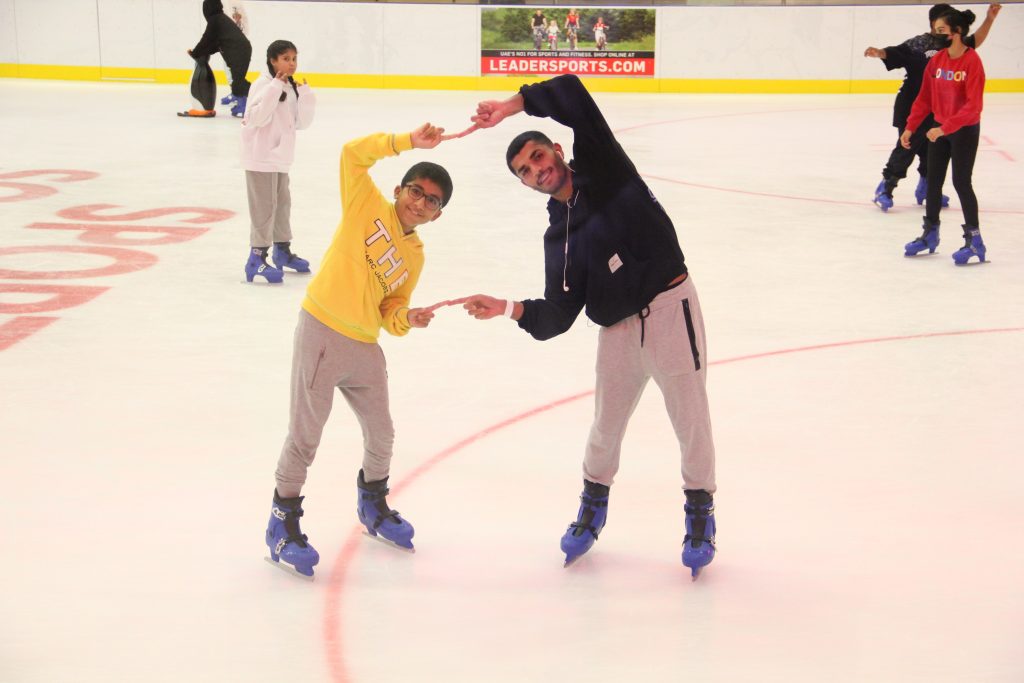Participating in ice sports is incomplete without a proper warm-up and cool-down routine. Wondering why? The intro-outro of the ice sports prepare the body to perform prior to the game and recover it in the end. It is a norm at a Dubai Ice Rink to promote warm-up and cool-down among all players-novice or experienced. This routine has multipurpose benefits for both the athletes and a novice player. It helps them acclimatize the ice rink and prevent injuries. This is the reason all the worldwide sports and fitness community rely on a warm-up, cool-down routine. Here’s a detailed guide on the best warm-up and cool-down exercises for skaters, designed to boost performance and keep your muscles injury-free.
The Importance of a Proper Warm-Up
A solid warm-up does more than just elevate your heart rate. It activates the muscles and gives your brain a signal to align the body for peak performance. It fosters blood flow in the body and facilitates it for peak performance. Ice skating involves a lot of lower body work, but your core and upper body also play a critical role in balance and coordination. This makes a dynamic, full-body warm-up essential. To get the best of warm-up, you may follow the following routine designed for skaters.
Engaging Warm-Up Routine Designed for Skaters
1. Jogging or jumping rope for three to five minutes– Start with a low-key aerobic exercise like jumping rope or jogging before stepping inside Ice Rink Dubai. This raises blood flow across your body and gets your pulse pounding. Two sets of 60-second jump rope intervals or a quick jog will guarantee you are not stepping onto the ice with stiff, cold muscles.
- Two minutes for leg swings – For stability, stand alongside a wall or railing. After controlled forward and backward swing one leg, then change to side-to- side swings. Key muscles for preserving speed and control on the ice, your hip flexors, hamstrings, and glutes will release with this dynamic stretch.
- Two-minute hip circle and hip flexor stretches – Focus on extending in all directions as you slow, broad circles with your hips to boost hip mobility. Stepping one foot back, gently bending both knees, and moving your hips forward can help you follow with a standing hip flexor stretch.
4. Two minutes’ lunges with a Torso Twist – Assuming a forward lunge stance, make sure your knee exactly above your ankle. Lunge forward; rotate your torso to the side of your front leg; hold for a second then straight back. This prepares your balance and stability as well as warms your quads, hips, and core. - Two minutes of high knees and butt kicks- To work your hamstrings, hip flexors, and core, alternate high knees with butt kicks. Focus on fast, explosive motions as you perform each for roughly thirty seconds. This increases agility and speeds muscle readiness.
- Skater Bounds (two to three minutes) – Skater bounds, which replicate the lateral action of skating, have you hop from side-to-side landing on one leg while propelling the other leg behind you. Maintaining equilibrium, keep your torso somewhat forward. This drill improves power, speed, and coordination as well as enables you to find skating’s rhythm.
- Two minutes of arm circles and cross-body arm swings – Don’t overlook your upper body, just because you feel only lower body will be exerting effort at an ice rink. Do big arm circles in both directions to loosen your arms and shoulders, then cross-body arm swings. Especially helpful for figure skaters or hockey players using a stick, this increases mobility in your shoulders.
Cool-Down Routine for Skating
Just as crucial as the warm-up is cool-down following a skate session. A good cool-down lets your heart rate go back to normal, releases tension, and helps lactic acid build-up to be reduced. It even fosters muscle recovery and relaxes a player’s body.
- Light Jog or Walk (3-5 minutes) – Start your quick jog or brisk walk around the track or rink. This helps clear any accumulated by-products from vigorous skating and progressively slows your heart rate.
- Two minutes of standing quadriceps stretches – Rising tall, lift one foot towards your glutes and hold it with your hand to elongate your front of thigh. Following thirty seconds, switch legs. Targeting the quadriceps, this stretch helps you to drive and stabilize you during skating.
3. Two minutes’ worth of hamstring stretches – Sit down with one leg stretched straight ahead and the other bent in towards your body. For a great stretch in your hamstrings, reach towards your toes. Spend thirty seconds holding then change legs. - Two minutes’ worth of glute stretches – Lay back and put one ankle across the other knee. Holding your thigh, draw it towards your chest. Long skating sessions strain your glutes and lower back greatly; hence this is a great stretch for them.
- Five minutes for a hip flexor stretch – Keeping your back knee on the ground, step one foot forward into a lunge while kneeling. To lengthen your hip flexors, softly push your hips forward. Hold thirty seconds on each side. Because of your lower body’s frequent contact, this area is often tight following skating.
- Two-minute Butterfly Stretch – Sit down letting your knees fall to the sides with your feet together. Holding your feet, gently press your knees towards the floor with your elbows. This stretch releases any tension that could build up during lateral skating motions by opening your hips.
7. Two minutes of spinal twists – Lay on your back, knees bent. Keeping your shoulders flat on the floor, drop your knees to one side. Spend thirty seconds on one side then turn around. This stretch helps ease any stress in your lower back and increases spinal mobility.
8. Deep breathing and shoulder rolls for two minutes – Close with gentle shoulder rolls and deep breathing. Breathe deeply, elevating your shoulders towards your ears, then exhale rolling them down and back. This helps you to relax and releases any residual strain in your upper body.
Final Thoughts
Both immediate performance and long-term injury prevention for ice skaters depend on a balanced warm-up and cool-down program. Every exercise in these programs has a particular goal—perhaps improving mobility, raising muscle temperature, or facilitating recuperation. These motions should feel deliberate and under control so that you may maximise your ice skating session and gradually increase your performance.
Remember, consistency is essential. Your daily skating schedule should include these warm-up and cool-down exercises to help you not only feel stronger and more flexible on the ice or pavement but also lower your chance of sprains, strains, and overuse injuries. Remain flexible, stay light, and keep skating powerfully!



